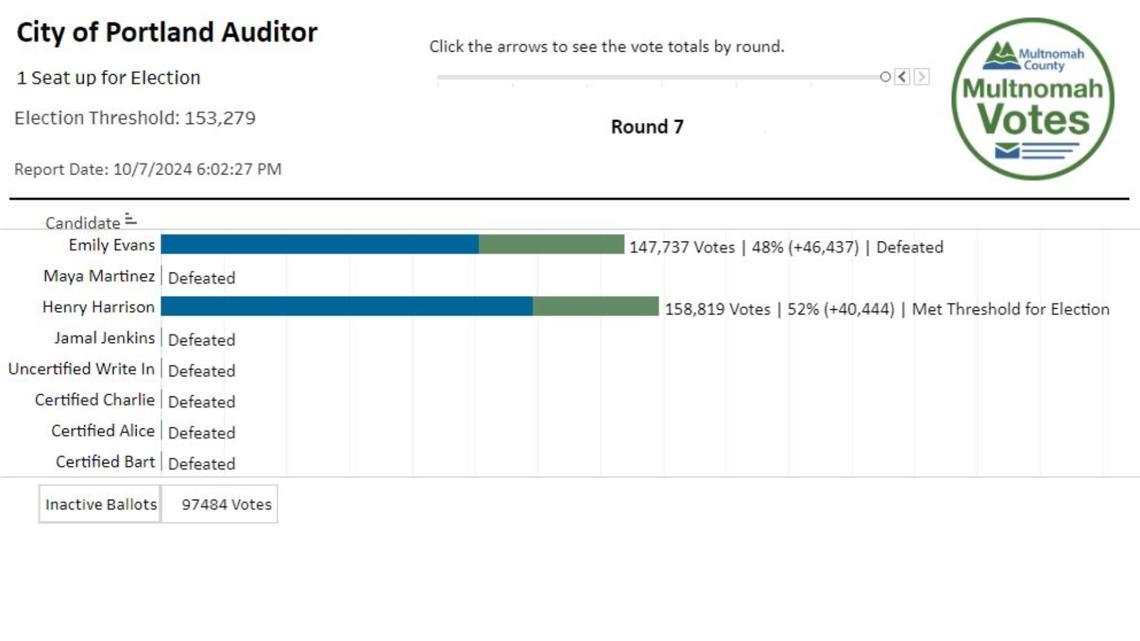PORTLAND, Ore. — Portland is mere hours away from choosing a completely new slate of elected officials to run the city's new form of government, and local voters will no doubt be eager to dive into the results as soon as the first round drops. But it'll take a few days to tally all the ballots, and voters will also have their hands full interpreting the new ranked-choice system.
The first round of early results will be released just after 8 p.m. Tuesday, and KGW's elections page will immediately compile a list of results for all the big races, from U.S. President down to the Portland city council. Voters can also check the Multnomah County Elections website for more detailed look at Portland's ranked-choice results and the Oregon Secretary of State's website for all other results.
Results are updated in batches at regular intervals over the following days. They're not official until they're certified on Dec. 2, but in most cases the winners will become clear long before then. The first round of results typically includes about 50-60% of Multnomah County ballots, according to county Elections Director Tim Scott, and more than 90% of the county's ballots are typically counted by the Thursday after Election Day.
Ranked-choice voting changes the way ballots will be filled out and counted for Portland races; instead of selecting just one candidate, voters will be asked to rank up to six choices in order of preference for mayor, auditor and city council. Portland voters who live in Washington or Clackamas counties will be included in Multnomah County's results for those city races.
If one mayoral candidate gets ranked first on more than 50% of ballots, they win. If no candidate reaches that threshold, the one with the fewest first-choice picks gets eliminated, and their votes are transferred to whoever each voter ranked next-highest. The procedure repeats through as many rounds as necessary until a candidate hits threshold of 50% plus one vote. The threshold is lowered to 25% plus one vote for city council races so that each race will produce three winners.
Multnomah County won't wait for 100% of ballots to be counted before doing the ranked-choice tabulation — it'll run the process for the initial batch of early results on election night, and then re-run it every time an additional batch is added, using computers to go through the whole process instantaneously.
The results will be presented on the county website using data tables to show round-by-round tabulation and an interactive bar chart to show how votes were transferred. The county has published an example page where voters can familiarize themselves with how those tables and charts will look.


"Every time we release the results report, it will be the full tabulation that includes all rounds of tabulation that were required to get to the point where we can say someone is leading in a contest," Scott explained.
Just like in a conventional race, the candidate leading in early results may not necessarily be the final winner — they could lose their lead as more ballots are tallied. The other key thing to remember is that the entire ranked-choice tabulation process will restart from scratch after each batch of ballots gets added, so candidates who get eliminated during one run-through will be back in contention for the next one.
Scott said the county's decision to run the ranked-choice tabulation after every round of ballots, instead of waiting for 100% of ballots to be counted and then running it once, was based on the county's desire for transparency and advice from experts in ranked-choice voting.
"We want voters to have all the information that we have, when we have it. We don't want to leave anyone in the dark," he said. "And so by presenting the results in this way, voters get to see what happens as we are going through our tabulation process, just like they always have. One, it aligns with our value of transparency and two, it aligns with our past practices of releasing as much data as we can as soon as we are able to do that."
Media outlets will typically call or project the outcomes of races based on early results on election night or in the following couple days, and those calls can also be expected for ranked-choice races. But just like in a conventional contest, ranked-choice races will take longer to call if they're very close.
County and state election offices play no role in the process of calling races — they only release the in-progress vote counts, and media outlets analyze the data and make their own decisions about whether to make a call.

